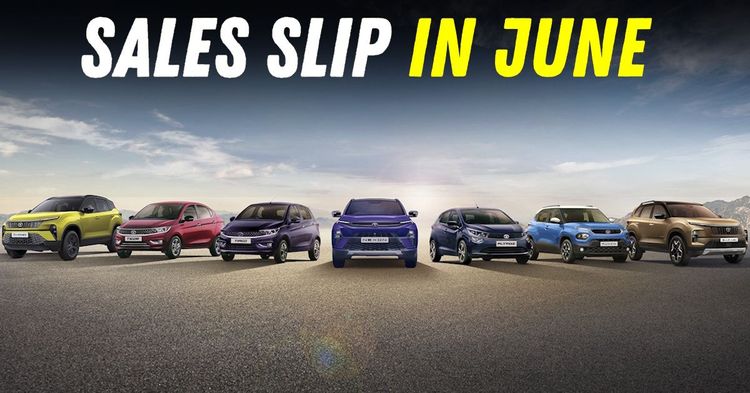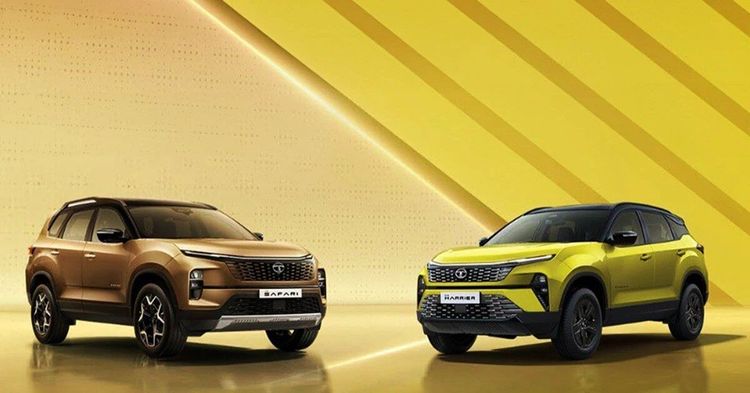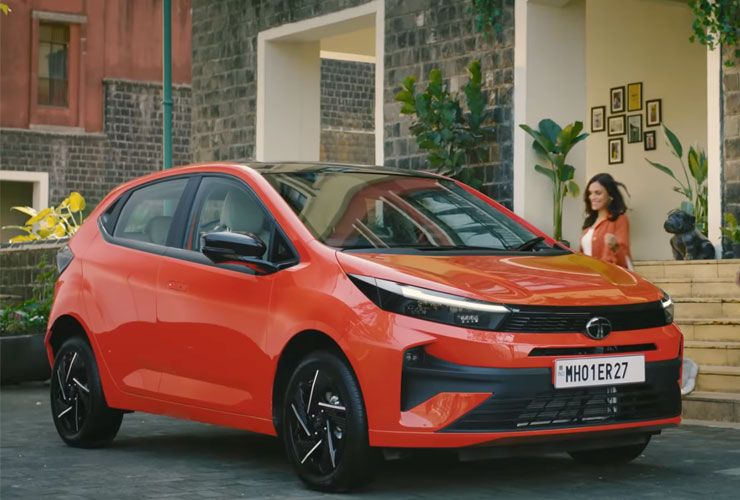Tata Motors Sales Dip in June 2025: What’s Really Going On?


Tata Motors saw a noticeable decline in vehicle sales in June 2025, with passenger vehicle (PV) sales falling by 15 percent year-on-year to 43,524 units, compared to 51,500 units in June 2024. This drop comes at a time when rivals like Maruti Suzuki and Hyundai are maintaining or growing their monthly volumes. The dip has sparked questions about whether this is a one-off correction or a sign of deeper concerns within Tata’s retail network and product strategy.

The commercial vehicle (CV) division also saw a dip of 5 percent, with 32,465 units sold in June 2025 versus 34,200 units during the same period last year. While that decline is relatively modest, the steeper drop in passenger vehicle numbers is drawing more attention, especially given Tata’s recent high-profile launches and EV leadership.
One key reason for the slump appears to be inventory correction. Dealerships across several states have reportedly been sitting on unsold stock, especially for models like the Altroz and Tiago. With updated BS6 Phase 2 norms and revised pricing post-subsidy changes, buyers are being more cautious, delaying purchases in anticipation of discounts or newer variants.

Tata’s midsize SUVs, particularly the Harrier and Safari, have also seen a drop in demand. Sales for the Harrier dipped to just over 1,800 units in June, while Safari sold fewer than 1,400 units, compared to a combined figure of over 4,500 units in the same month last year. Part of this may be due to buyers waiting for the upcoming Harrier.ev, which Tata has just launched. Some customers are now choosing to postpone their purchase until the electric version becomes available.
In contrast, Tata’s electric vehicle range held steady. The Nexon EV, still the company’s best-selling electric car, contributed around 4,000 units, while the Tiago EV clocked 2,500+ units. That’s nearly 15 percent of total PV sales, underlining how important the EV segment has become to Tata’s passenger car business. However, with FAME II subsidies now limited and buyers in non-metro areas still wary of charging access, future growth could require more incentives or price corrections.
Another factor weighing down overall performance is stiffer competition. The Hyundai Creta facelift, Kia Seltos, and Maruti’s Brezza continue to draw buyers in the compact and midsize SUV space. Hyundai in particular has seen consistent traction in June thanks to its refreshed design and tech-loaded offerings, some of which now include ADAS features as standard. Buyers in the ₹12–₹20 lakh bracket now have more options than ever before. Tata is missing a product that would directly challenge Creta, Seltos and Grand Vitara in the Rs. 10-20 lakh range.

Tata’s hatchback segment is also under pressure. The Altroz saw sales fall below 3,000 units, despite being offered in petrol, diesel, CNG, and DCT variants. The entry-level Tiago and Tigor are still selling in decent numbers, but growth is minimal due to increasing overlap with their EV versions, and more competition from feature-rich budget hatchbacks from Maruti and Hyundai.
Industry analysts believe part of the slowdown could be intentional. Tata may be controlling wholesale dispatches to avoid overloading dealer inventories, especially ahead of upcoming festive-season launches. With new models like the Curvv EV and Harrier.EV scheduled for later this year, the brand may be realigning its production and marketing resources in anticipation of a major push from October onward.
Meanwhile, Tata Motors has introduced new retail strategies, such as exclusive EV-only showrooms in key cities, and is improving its digital retail experience. These efforts could improve conversion rates and footfall, especially as customers become more price-conscious.
To regain momentum, Tata will need to quickly address delays in deliveries, offer competitive finance schemes, and maintain clarity in its EV pricing as subsidies wind down. Most importantly, it must ensure that the Harrier and Safari, once core to its SUV success, don’t fall further behind in a rapidly evolving segment.
For now, June has been a soft month for Tata. Whether this is a temporary dip or an early sign of pressure from rivals will become clearer in the next quarter. With major launches in the pipeline and strong brand equity, Tata still has enough in its arsenal, but it may need to recalibrate its pricing and positioning faster than expected.